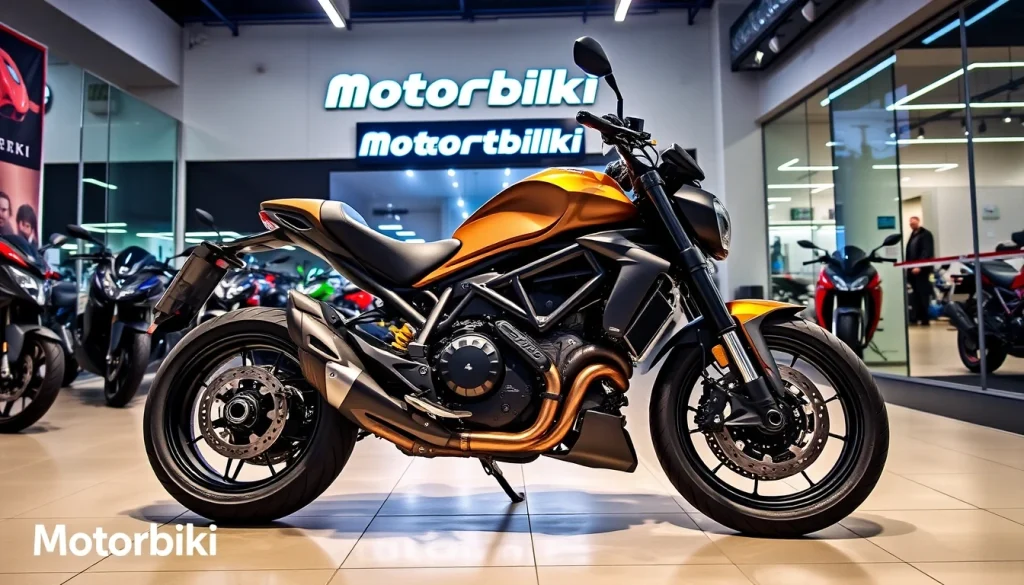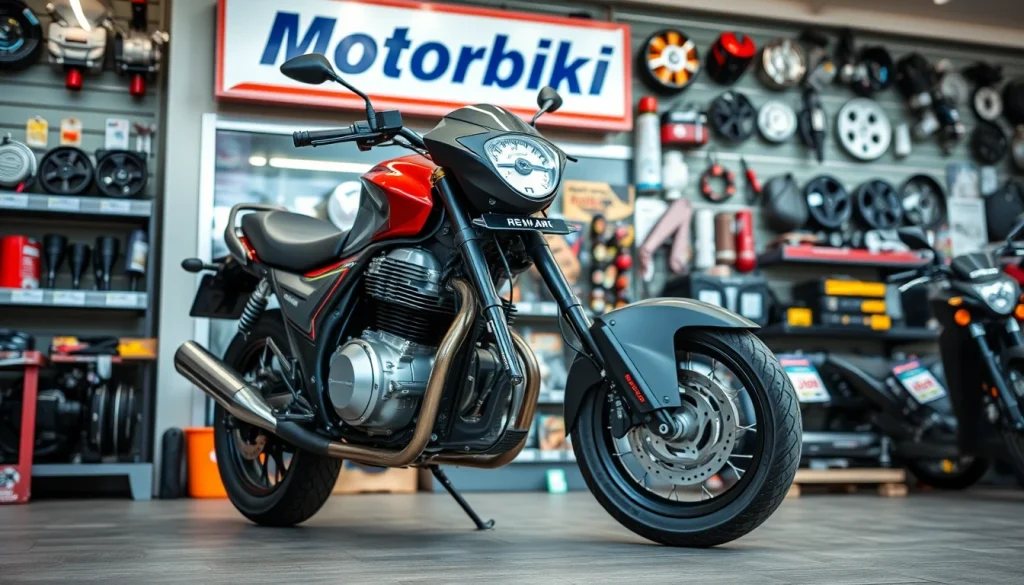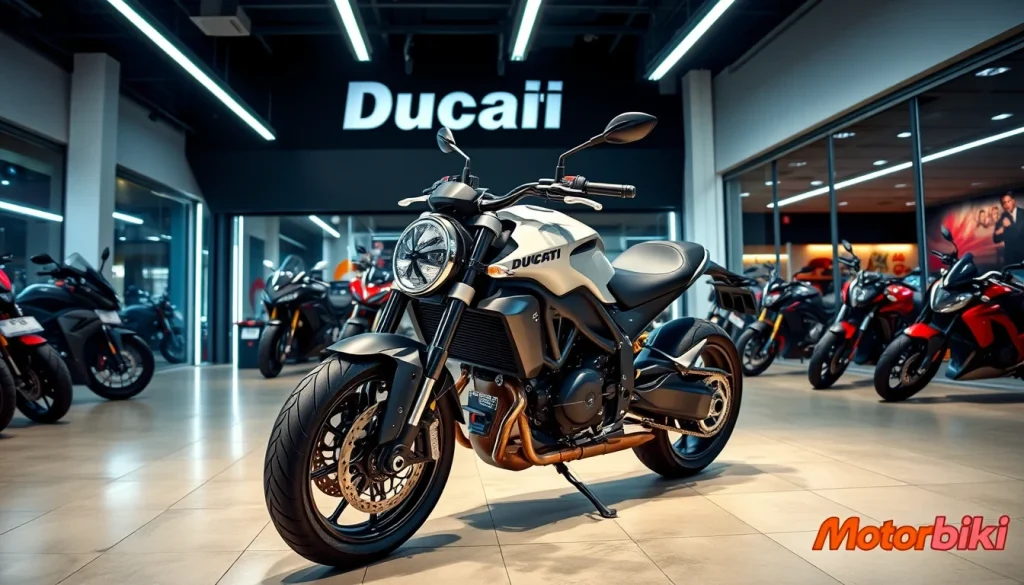Ducati Diavel 1260 Problems Exposed: 10 Real Rider Issues & Expert Fixes You Must Know
Ducati Diavel 1260 Problems
The Ducati Diavel 1260 is a powerhouse of bold design, sport bike DNA, and cruiser comfort. It’s loved for its muscular aesthetics and 159-hp Testastretta DVT engine—but even the best machines can have rough spots.

After gathering real rider feedback, mechanics’ notes, and service reports, here are the Ducati Diavel 1260 problems, paired with practical fixes to keep your ride smooth and stress-free.
Random Engine Shutdowns at Low Speed: Ducati Diavel 1260 Problems
What Happens:
Some Diavel 1260 owners report the engine shutting off unexpectedly, especially during deceleration or slow riding.
Known Issue:
- Kickstand sensor fault
- ECU mapping errors
- Loose connectors near the throttle body
The best solution to this problem is as follows:
Visit a Ducati service center for a sensor inspection and ECU software update. Also, check for loose or corroded connections near the wiring harness. You can also avoid this problem by checking your motorcycle daily and fixing any problems immediately. To eliminate this problem, use good-quality parts that are durable and meet the company’s specifications.
TFT Display Freezes or Flickers in Ducati Diavel 1260
What Happens:
The TFT screen may freeze, dim, or become unresponsive during rides, particularly in cold or extremely sunny conditions.
Cause:
- Outdated firmware
- Moisture or heat exposure
- Electrical connector issues
The best solution to this problem is as follows:
- Update the instrument cluster software
- You can also avoid this problem by checking your motorcycle daily and fixing any problems immediately.
- To eliminate this problem, use good-quality parts that are durable and meet the company’s specifications.
- Seal or replace the display if moisture is trapped
- Avoid water spray near the screen during washes
Notchy Gear Changes (Especially 1st to 2nd)
What Happens:
Shifting feels hard or “clunky” in lower gears, especially under aggressive acceleration or cold starts.
Why It Happens:
- Clutch cable slack
- Quickshifter not calibrated
- Dirty or low-quality engine oil
The best solution to this problem is as follows:
- Use high-performance synthetic oil (e.g., Motul 7100)
- Adjust the gear lever and clutch cable tension
- You can also avoid this problem by checking your motorcycle daily and fixing any problems immediately.
- To eliminate this problem, use good-quality parts that are durable and meet the company’s specifications.
- Ensure the DQS quickshifter is tuned properly
Weak Rear Brake Response: Ducati Diavel 1260
What Happens:
The rear brake lacks bite, feeling soft or ineffective during initial application.
Root Cause:
- Air is trapped in the brake line.
- Pad wear or poor-quality pads.
- The rear master cylinder is not pressurizing properly.
The best solution to this problem is as follows:
- Fully bleed the rear brake system.
- You can also avoid this problem by checking your motorcycle daily and fixing any problems immediately.
- To eliminate this problem, use good-quality parts that are durable and meet the company’s specifications.
- Install sintered EBC HH brake pads.
- Replace or upgrade the rear master cylinder if fading continues.
Excessive Heat Around the Legs
What Happens:
Riders often complain of leg discomfort due to heat, especially in summer traffic or stop-and-go riding.
Why It Happens:
- Exhaust routing is close to the foot area
- Air-cooled zones heat up faster at low speeds
- Idle mapping may keep the revs too high
The best solution to this problem is as follows:
- Add heat shields or ceramic wrap to the exhaust headers
- You can also avoid this problem by checking your motorcycle daily and fixing any problems immediately.
- To eliminate this problem, use good-quality parts that are durable and meet the company’s specifications.
- Update the ECU to a cooler-running map
- Use premium-grade oil for cooler combustion temps
- Protect the environment as much as possible, and this problem will end.
Inaccurate Fuel Gauge Readings
Common Cause:
The fuel gauge occasionally shows full or empty inaccurately, even if the tank is half-filled.
Known Issue:
- The fuel level sensor gets stuck or malfunctions
- Common across many Ducati models
Solution
Ask your dealer for a fuel sensor replacement. If under warranty, most dealerships replace it for free.
- You can also avoid this problem by checking your motorcycle daily and fixing any problems immediately.
- To eliminate this problem, use good-quality parts that are durable and meet the company’s specifications.
- Update the ECU to a cooler-running map
- Use premium-grade oil for cooler combustion temps
- Protect the environment as much as possible, and this problem will end.
Frequent Chain Adjustments Needed
What Happens:
The chain slackens quickly, especially after spirited rides, and the rear wheel may misalign.
Common Cause:
- Aggressive torque delivery
- Rear axle not tightened to spec
- Chain quality or lack of regular cleaning
Best Solution with the help of experts:
- You can also avoid this problem by checking your motorcycle daily and fixing any problems immediately.
- To eliminate this problem, use good-quality parts that are durable and meet the company’s specifications.
- Use premium-grade oil for cooler combustion temps
- Protect the environment as much as possible, and this problem will end.
- Adjust and clean the chain every 500–700 km
- Use chain alignment tools during adjustments
- Always torque the axle nut as per the owner’s manual

Random Warning Lights on the Dash
What Happens:
ABS, traction control, or engine lights turn on randomly, even when the bike feels normal.
Cause:
- Battery voltage fluctuations
- A faulty O2 sensor or a lean mixture
- Software bugs
Best Solution with the help of experts:
- Tighten battery terminals.
- Get an OBD2 scan to read and clear fault codes.
- You can also avoid this problem by checking your motorcycle daily and fixing any problems immediately.
- To eliminate this problem, use good-quality parts that are durable and meet the company’s specifications.
- Perform an ECU refresh/update via dealership tools
Heavy Feel at Low Speed
Cause:
At low speeds or in parking, the Diavel’s weight becomes noticeable and hard to manage for some riders.
Why It Happens:
- 240+ kg wet weight
- Wide handlebars and rear tires make tight turns harder
Best Solution with the help of experts:
- Practice clutch + rear brake control
- Add handlebar risers for better leverage
- Keep tires at proper pressure for lighter steering
- You can also avoid this problem by checking your motorcycle daily and fixing any problems immediately.
- To eliminate this problem, use good-quality parts that are durable and meet the company’s specifications.
High Service and Maintenance Costs
What Happens:
Major services like valve clearance and timing belts are expensive, sometimes exceeding $1,000 per visit.
Cause:
- The desmodromic valve system requires specialized labor
- Service parts and Ducati labor rates are premium-priced
Best Solution with the help of experts:
- Learn to handle basic DIY maintenance (oil, brake fluid, chain)
- You can also avoid this problem by checking your motorcycle daily and fixing any problems immediately.
- To eliminate this problem, use good-quality parts that are durable and meet the company’s specifications.
- Use certified non-dealer Ducati mechanics
- Stick to maintenance schedules to prevent costly repairs later

Specification of Ducati Diavel 1260
Ducati Diavel 1260 All-in-One Specifications Table
| Category | Specification |
| Model Name | Ducati Diavel 1260 |
| Production Years | 2019 – Present |
| Motorcycle Class | Power Cruiser |
| Engine Type | Testastretta DVT L-Twin, 4 valves per cylinder, liquid-cooled |
| Displacement | 1,262 cc |
| Bore x Stroke | 106 mm x 71.5 mm |
| Compression Ratio | 13.0:1 |
| Fuel System | Bosch electronic fuel injection, elliptical throttle bodies, ride-by-wire |
| Maximum Power | 159 hp (117 kW) @ 9,500 rpm |
| Maximum Torque | 129 Nm (95 lb-ft) @ 7,500 rpm |
| Exhaust | 2-1-2 system with catalytic converter, twin mufflers |
| Emission Standard | Euro 4 / Euro 5 (depending on year) |
| Gearbox | 6-speed manual |
| Clutch | Wet multiplate slipper clutch with servo assistance |
| Final Drive | Chain |
| Frame | Tubular steel trellis frame with cast aluminum swing arm |
| Front Suspension | 50 mm fully adjustable USD fork |
| Rear Suspension | Adjustable monoshock, mounted on the left side of the swingarm |
| Front Suspension Travel | 120 mm |
| Rear Suspension Travel | 130 mm |
| Front Wheel | 17″ x 3.5″ alloy |
| Rear Wheel | 17″ x 8.0″ alloy |
| Front Tire | 120/70 ZR17 Pirelli Diablo Rosso III |
| Rear Tire | 240/45 ZR17 Pirelli Diablo Rosso III |
| Front Brake | Dual 320 mm semi-floating discs, Brembo M4.32 or M50 calipers (depends on variant) |
| Rear Brake | Single 265 mm disc, 2-piston floating caliper |
| ABS System | Bosch Cornering ABS EVO |
| Riding Modes | Sport, Touring, Urban |
| Power Modes | High, Medium, Low |
| Traction Control | Ducati Traction Control (DTC) EVO, 8 levels |
| Wheelie Control | Ducati Wheelie Control (DWC) EVO |
| Launch Control | Ducati Power Launch (DPL) |
| Cruise Control | Standard on all models |
| Quick Shifter | Optional (Standard on Diavel 1260 S) |
| Instrument Cluster | 3.5″ TFT full-color display |
| Lighting System | Full LED lighting system with DRL |
| Connectivity | Ducati Multimedia System (DMS), Bluetooth enabled |
| Keyless Ignition | Yes |
| Seat Height | 780 mm (30.7 in) |
| Wheelbase | 1,600 mm (63.0 in) |
| Rake | 27° |
| Trail | 120 mm |
| Fuel Tank Capacity | 17 liters (4.5 US gal) |
| Dry Weight | 218 kg (480 lbs) |
| Kerb Weight | 244 kg (538 lbs) |
| Top Speed | Around 270 km/h (167 mph) |
| Fuel Consumption | Approx. 5.5 – 6.0 L/100 km |
| CO2 Emissions | Approx. 137 g/km |
| Standard Color Options | Sandstone Grey, Thrilling Black, Total Black, Red (varies by model year) |
| Available Variants | Diavel 1260 (base), Diavel 1260 S |
| Special Features | Cornering ABS, Wheelie Control, Power Launch, Cruise Control, TFT, Bluetooth |
| Warranty | 24 months, unlimited mileage |
| Service Intervals | 15,000 km or 12 months (oil) / 30,000 km (Desmo valve check) |
| Price Range (New) | $21,000 – $23,500 (depends on market & variant) |
Quick Maintenance Checklist (Bonus Table)
| Task | Interval | Tip |
| Engine Oil | Every 6,000 km | Use Motul 7100 or Shell Advance Ultra |
| Valve Check | Every 15,000–18,000 km | Book with a certified Ducati tech |
| Chain Lubing | Every 500–700 km | Use a quality chain cleaner and lube |
| Brake Fluid | Every 2 years | Use DOT 4 fluid from a trusted brand |
| ECU Update | Yearly or as needed | Ask the dealer to flash the firmware |
| Tire Check | Every ride | 36 psi front, 42 psi rear recommended |
Diavel 1260 FAQs
Q: Is the Ducati Diavel 1260 good for long rides?
A: Yes, it’s surprisingly comfortable for long touring—just watch for heat buildup and fuel stops.
Q: What’s the Diavel’s fuel efficiency?
A: It offers 16–18 km/l depending on throttle use and rider mode.
Q: Can I ride the Diavel 1260 as a daily commuter?
A: You can, but city traffic will test your clutch hand and heat tolerance.
Q: Is the Diavel 1260 suitable for beginners?
A: Not ideal. It’s powerful and heavy, better for intermediate to experienced riders.
User reviews and feedback
Mike from California says if you’re considering the Diavel 1260, just know it’s a beast of a machine. He’s ridden everything from Harleys to sport bikes, but nothing mixes cruiser comfort and sportbike punch quite like this one. He admits the throttle can feel a bit jumpy at lower speeds, but once you adapt, it’s thrilling. However, he adds the passenger seat isn’t ideal for long rides—his wife found it uncomfortable on anything over an hour.
James from the UK shares that he’s been riding the Diavel 1260 for over a year and still loves every second. He says the design gets attention everywhere, and people are often surprised by how agile the bike is for its size. That said, he warns that the wide rear tire makes U-turns and tight city maneuvering a bit tricky. He had a small issue with the quick shifter sensor once, but Ducati’s service center sorted it out under warranty without hassle.
Carlos in Texas says if torque is your thing, don’t think twice. He owns the Diavel 1260 S and mostly uses it for weekend blasts and short trips. What impressed him most was the electronics package—especially the traction and wheelie control, which work seamlessly. His only complaint is how hot the engine gets in stop-and-go traffic, especially in summer. On open roads, though, he says it rides like a missile.
Tanya from Brisbane shares a different perspective. As a female rider, she was worried the bike might be too heavy or tall, but she says it’s incredibly well-balanced. She found the low-speed handling better than expected. The engine braking was a bit intense at first, but she recommends starting in Urban mode before switching to Touring or Sport, which helped her build confidence.
Adeel from Dubai says he’s been riding the Diavel 1260 for over two years and doesn’t plan to part with it anytime soon. He warns that maintenance, especially the 30,000 km desmo service, is expensive if you’re out of warranty. But in his words, it’s worth it. He says the ride, the power delivery, and even the way people look at the bike make every dirham spent feel justified. For him, it’s more than a motorcycle—it’s a symbol of lifestyle and attitude.
Top 5 Ducati Diavel 1260 Competitors (Detailed Comparison Table)
| Feature / Bike | Ducati Diavel 1260 | Yamaha VMAX 1700 | Harley-Davidson Sportster S | BMW R 18 | Kawasaki Z H2 SE | Triumph Rocket 3 R |
|---|---|---|---|---|---|---|
| Engine Type | 1262cc V-Twin, Testastretta DVT | 1679cc V4 | 1252cc Revolution Max V-Twin | 1802cc Boxer twin | 998cc Supercharged Inline-4 | 2458cc Inline-3 |
| Max Power | 159 hp @ 9,500 rpm | 197 hp @ 9,000 rpm | 121 hp @ 7,500 rpm | 91 hp @ 4,750 rpm | 200 hp @ 11,000 rpm | 165 hp @ 6,000 rpm |
| Torque | 129 Nm @ 7,500 rpm | 166 Nm @ 6,500 rpm | 125 Nm @ 6,000 rpm | 158 Nm @ 3,000 rpm | 137 Nm @ 8,500 rpm | 221 Nm @ 4,000 rpm |
| Weight (Kerb) | 244 kg | 310 kg | 228 kg | 345 kg | 240 kg | 291 kg |
| Seat Height | 780 mm | 775 mm | 765 mm | 690 mm | 830 mm | 773 mm |
| Top Speed | 270 km/h (est.) | 240+ km/h | 220 km/h | 180 km/h | 280+ km/h | 250+ km/h |
| Ride Modes / Electronics | 3 modes, TFT, TC, ABS, Cruise, DWC | Basic electronics | TFT, ABS, TC, Ride Modes | Basic electronics | Full suite: IMU, Cornering ABS, TC | IMU, TFT, Cornering ABS, Cruise |
| Styling & Appeal | Futuristic, aggressive, muscular | Classic muscle bike | Sporty cruiser with modern touch | Retro cruiser, nostalgic styling | Hypernaked meets power cruiser | Muscular yet premium retro-modern |
| Comfort Level | Moderate–High | Moderate | Moderate | Very high (plush seat, cruiser ergos) | Moderate (aggressive stance) | High (wide bars, relaxed pegs) |
| Exhaust Sound | Deep growl, sporty | Loud and raw | Rumbly modern twin | Deep, low-end bass | High-pitched whine | Deep triple bark |
| Maintenance Cost | High (Desmo service) | Moderate–high | Moderate | Moderate | High (supercharger parts) | High but long intervals |
| Best For | Tech-savvy riders who want power + style | Old-school muscle fans | Riders upgrading from smaller Harleys | Comfort-focused cruiser lovers | Speed freaks who want high tech | Riders wanting insane torque + class |
| Starting Price (USD) | $21,000 – $23,500 | $18,000+ (discontinued) | $16,999+ | $15,495+ | $19,700+ | $23,895+ |
Which One Should You Choose?
- Choose the Diavel 1260 if you want a unique mix of Ducati performance, bold styling, and advanced electronics.
- Yamaha VMAX 1700 is for old-school muscle bike fans, but it’s discontinued in many markets.
- Harley-Davidson Sportster S is perfect for riders who want Harley DNA with modern tech in a compact package.
- BMW R 18 is ideal if you’re after a traditional, ultra-comfortable cruiser with huge road presence.
- Kawasaki Z H2 SE is for those who want a streetfighter that out-accelerates most bikes with superb tech.
- Triumph Rocket 3 R offers unmatched torque and refined British engineering for long rides and city style.
Final Thoughts: Should You Worry?
The Ducati Diavel 1260 isn’t unreliable, but it’s a complex machine with advanced electronics, torque-rich delivery, and a demanding service routine.
What Riders Love:
- Insane power and torque
- Impressive braking and electronics
- Head-turning design
What They Tolerate:
- Occasional sensor glitches
- Heat in traffic
- Ducati’s premium upkeep
With regular care, timely software updates, and basic mechanical awareness, most of these issues are preventable or fixable without long-term harm to the bike.







